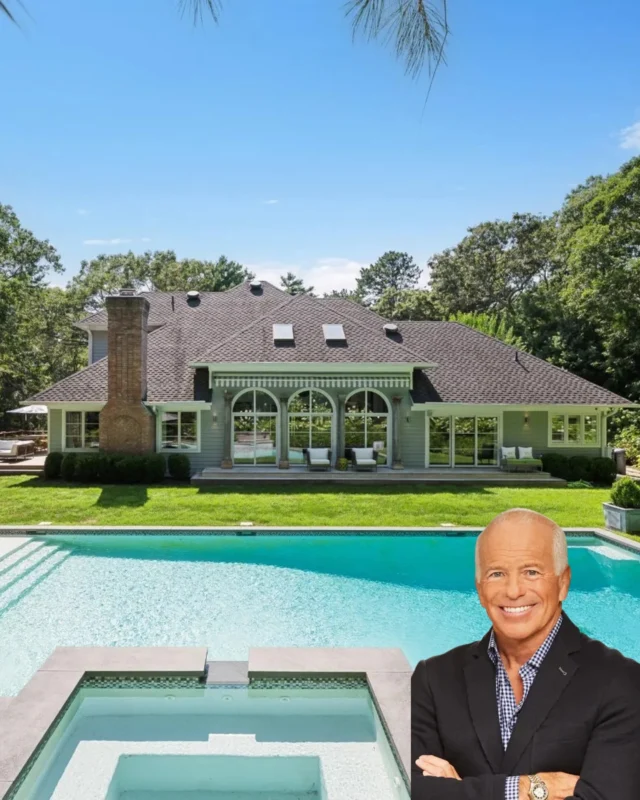Cottage gardens have a special charm. These lively, colorful combinations of old-fashioned plants are the very essence of informality, growing together in happy abandon, spilling onto pathways, leaning on fences, and generally creating a feeling of exuberance. Their laid-back spirit suits the relaxed feeling of summer by the sea on the East End. Even in a formal landscape there can be a place for a cottage garden, enclosed and gated in a small world of its own.
Cottage gardens originated in England and Europe, where the “cottagers” who worked on the grand estates grew their own food and medicinal herbs in small plots. Settlers brought the cottage garden to America, growing vegetables, herbs and flowers used to make dyes and medicines, in dooryard plots enclosed by picket fences.
Today’s cottage gardens have evolved but are still built around regional and old-fashioned plants. Most cottage gardens include different kinds of plants – perennials, annuals, bulbs, herbs, vines and even shrubs – all planted together. Fragrant plants are especially welcome in a cottage garden.
When choosing plants for your East End cottage garden, be sure to include some that have special meanings or associations for you. My own garden includes old-fashioned bleeding heart because I was enchanted by its dangling locket-shaped blossoms in a neighbor’s garden where I played as a child. A cottage garden is also a good place for plants you receive as gifts for a birthday, holiday or other occasion. Plants that self-sow, such as forget-me-nots and Johnny jump-ups, are fun to include, too – let them come up where they will and introduce a delightful bit of serendipity to your garden. Whichever plants you select for your cottage garden, choose them based on their individual qualities rather than the contribution they make to the total design. Try to assemble a pleasing assortment of colors, but don’t be a slave to a color scheme. Also be sure to include some tall and big plants, too, so you don’t end up with a collection of little things. When planting, it’s still best to have more than one of each kind of plant – small clumps of three or five will keep the garden from looking entirely random. Antique and heritage roses such as damasks and cabbage roses also have a place in a cottage garden. A more adaptable alternative are the David Austin roses (sold in many garden centers and nurseries on the East End). These roses are bred to combine the intoxicating fragrance and color range of heritage roses with the hardiness and disease resistance of more modern varieties.
When choosing plants for your cottage garden, look for heirloom and old-fashioned varieties and species rather than relying on lots of modern hybrids. Older varieties such as heliotrope and sweet peas are often more fragrant than newer cultivars bred primarily for large size or unusual color. On the East End, a cottage garden could include such regional specialties as Montauk daisy and plants adapted to seashore conditions – bayberry, sea pink (Armeria), sea lavender (Limonium), deliciously fragrant rugosa roses (which can be seen along Dune Road in Southampton in summer), New England aster, butterfly bush, Russian sage (Perovskia), black-eyed Susan, perennial salvias and, surprisingly, prickly pear cactus. Don’t be afraid to experiment in your garden – if you don’t like the results you can always change the garden next year. This season just have a little fun with your cottage garden.











![Picnic season isn’t over just yet. From crisp whites to collapsible tables, a few well-chosen essentials can turn any outdoor moment into something special. We’ve curated a list of favorites to help you make the most of every last warm day. [link in bio]](https://hamptonsrealestateshowcase.com/wp-content/uploads/sb-instagram-feed-images/550776784_18534662161030135_2052866662940107332_nfull.webp)
![Seaside gardens are more than just beautiful, they’re built to endure. With the right plants, structure, and intention, coastal landscapes can thrive in even the toughest conditions. Designers share how to blend aesthetics with resilience for a garden that’s both striking and sustainable. [link in bio]](https://hamptonsrealestateshowcase.com/wp-content/uploads/sb-instagram-feed-images/552039742_18534454579030135_6181491184247772098_nfull.webp)




![Not your average merch 🌊 The Salt Heir blends nostalgia, storytelling, and a deep-rooted connection to the East End into something more than just clothing. With each sweatshirt or print, founder Hannah Lasurdo invites us to slow down, reflect, and reconnect with nature, with memory, and with ourselves. [link in bio]](https://hamptonsrealestateshowcase.com/wp-content/uploads/sb-instagram-feed-images/547662850_18533053936030135_1923991315216290125_nfull.webp)
![Balance isn’t just about style, it’s about how a space makes you feel. From calm bedrooms to productive home offices, designers like @LibbyLangdon and Jennifer Weisberg Cohen share how contrast, symmetry, and proportion can create harmony in every room. [link in bio]](https://hamptonsrealestateshowcase.com/wp-content/uploads/sb-instagram-feed-images/547738382_18532909366030135_879400579844425230_nfull.webp)
